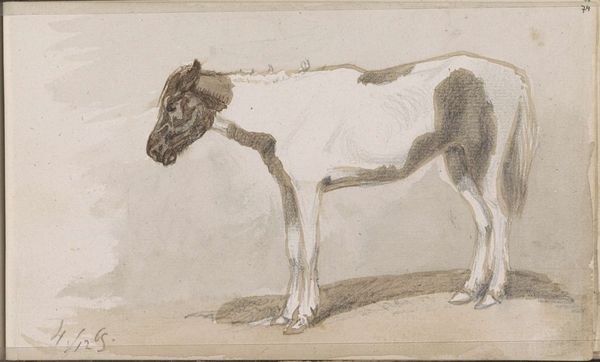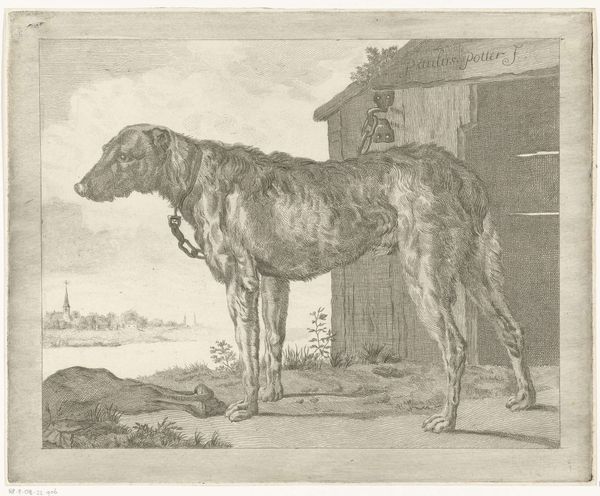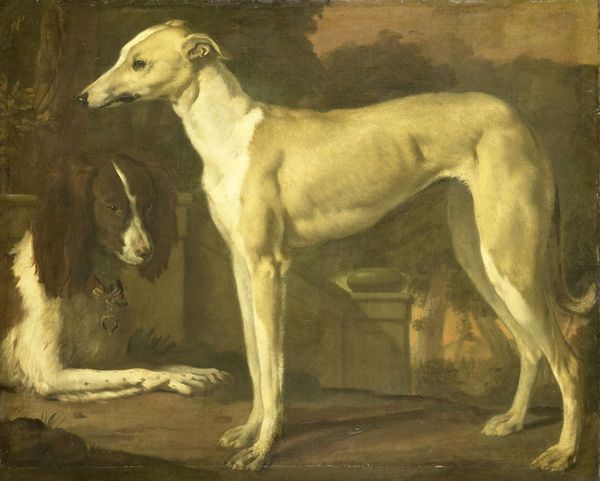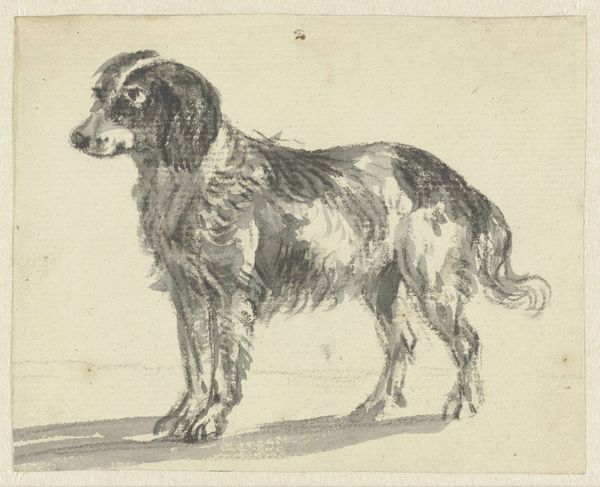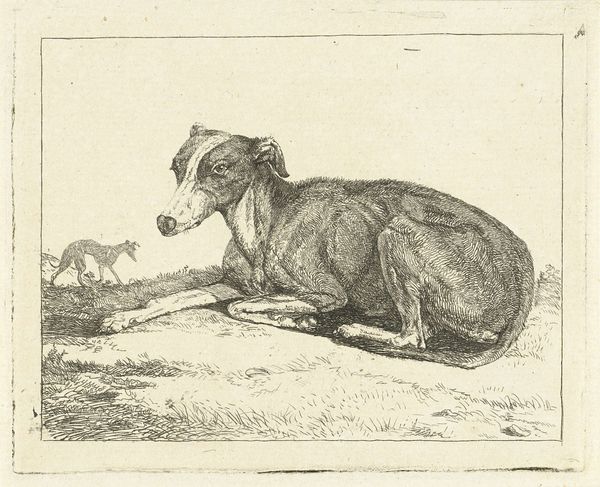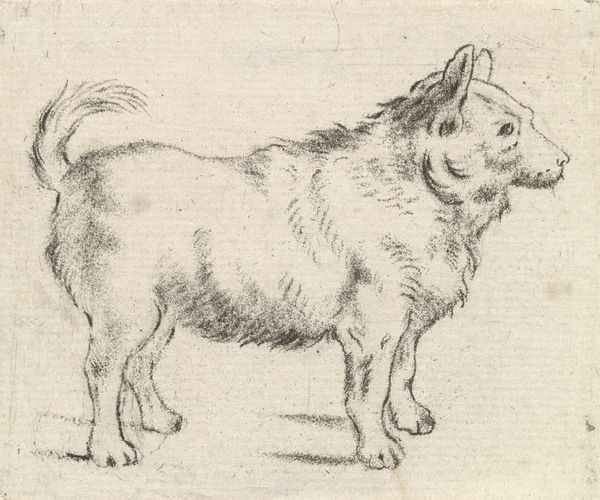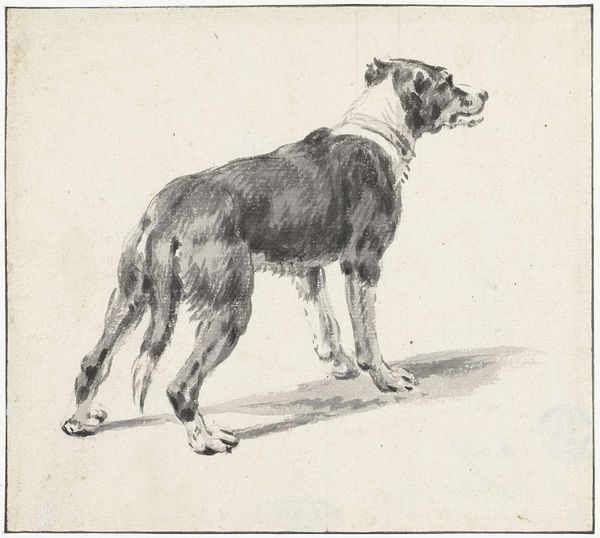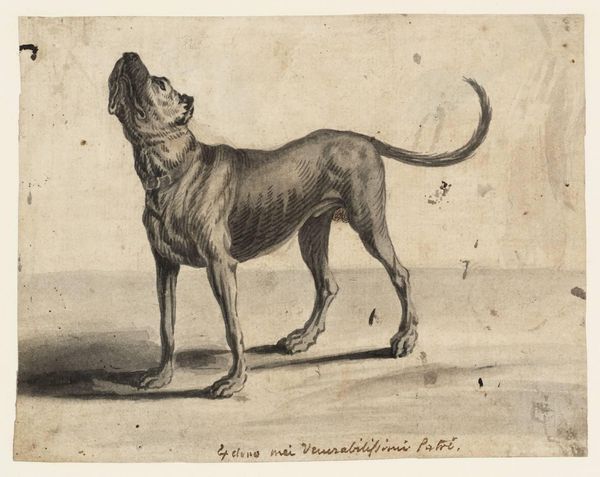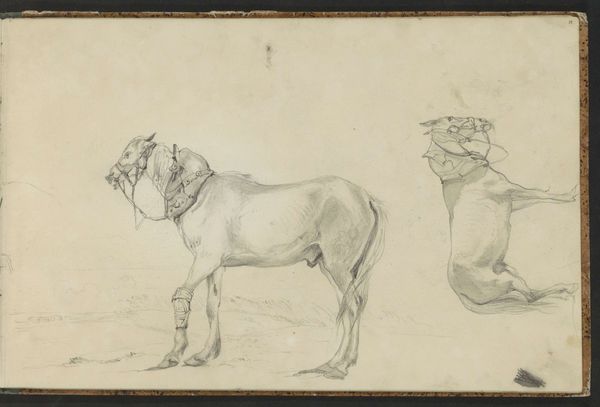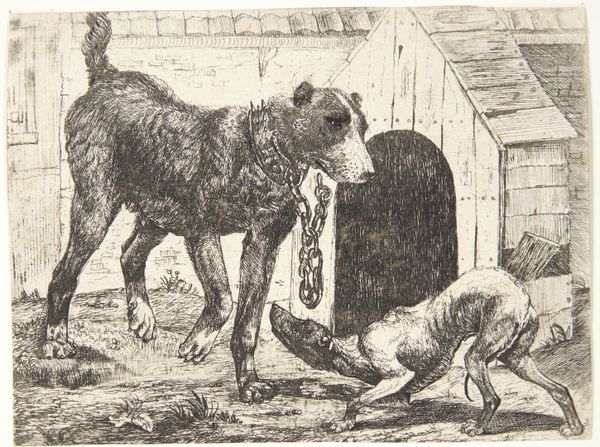
Dimensions: support: 159 x 229 mm
Copyright: CC-BY-NC-ND 4.0 DEED, Photo: Tate
Editor: We're looking at 'The Dog ‘Racket’' by Sir Edwin Henry Landseer, made in 1873. It's a pencil drawing. I'm struck by how stoic the dog appears. What do you see in this piece? Curator: Notice how Landseer captures not just the likeness, but also the very essence of "Racket." The dog's alert posture and the heavy collar suggest domestication, but the gaze holds a hint of wildness, of an older, untamed spirit. What does this contrast evoke for you? Editor: I guess it reflects the changing relationship between humans and animals in the 19th century, a push and pull between control and appreciation of nature. Curator: Precisely. Landseer was known for imbuing animals with human-like qualities. This dog becomes more than just a pet. It carries the weight of loyalty, servitude, and perhaps even a silent critique of human dominance. Editor: I never thought a simple dog portrait could hold so much meaning. It's more than just a drawing of a dog. Curator: Indeed, symbols often whisper louder than words.
